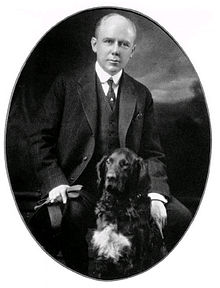Percival Proctor Baxter
| Percival Proctor Baxter | |
|---|---|
 |
|
| 53rd Governor of Maine | |
|
In office January 31, 1921 – January 7, 1925 |
|
| Preceded by | Frederic Hale Parkhurst |
| Succeeded by | Owen Brewster |
| Member of the Maine House of Representatives | |
|
In office 1916-1919 |
|
| Member of the Maine Senate | |
|
In office 1909-1910 1919-1921 |
|
| Personal details | |
| Born | November 22, 1876 Portland, Maine, U.S. |
| Died | June 12, 1969 (aged 92) Portland, Maine, U.S. |
| Political party | Republican |
| Alma mater |
Bowdoin College Harvard Law School |
Percival Proctor Baxter (November 22, 1876 – June 12, 1969) was the 53rd Governor of the U.S. state of Maine who served from 1921 to 1925.
Baxter was born into a wealthy family in Portland, Maine where his father James Phinney Baxter served six terms as mayor and had made his fortune in the canning industry. He graduated from Portland High School in 1894, Bowdoin College in 1898. While at Bowdoin, Baxter founded the school's literary magazine, The Quill. He later earned a law degree from Harvard University in 1901. He went into the family real estate business in Portland. He had seven siblings. However, he was to inherit the bulk of the family fortune. When Baxter was governor he donated a large parcel of forest land to the people of Maine, which became Baxter State Park. He said "Man is born to die. His works are short-lived. Buildings crumble, monuments decay, and wealth vanishes, but Katahdin in all its glory forever shall remain the mountain of the people of Maine."
Baxter was also a fierce opponent of the Ku Klux Klan of Maine, which supported the career of his political nemesis and successor Owen Brewster.
Baxter's history is intertwined with Baxter State Park, which bears his name, and with Mount Katahdin, Maine's highest point (the highest knob on Katahdin is called Baxter Peak).
In 1903 Baxter went on a fishing trip to the area around Katahdin for the first time. In 1895 the Maine Proprietors Association had urged the state to turn that area of the Maine woods into a state park to attract tourists. In 1911 a bill was introduced to turn the region into a U.S. National Park but none of the plans came to fruition. In 1916 Baxter began his campaign to make the area a state park. In 1920 he led a group of politicians up Pamola Peak, traversing the Knife Edge to the summit (now known as Baxter Peak).
...
Wikipedia
